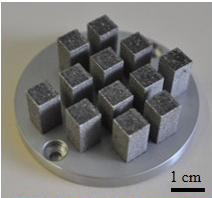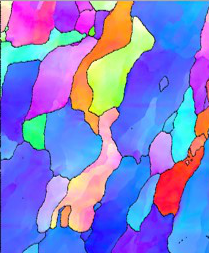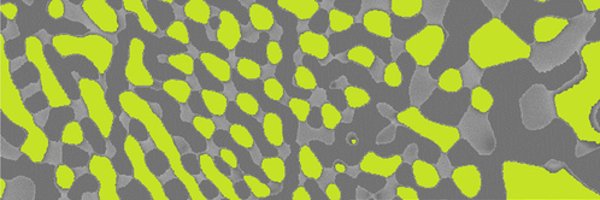
Processing of Fe-Al alloys by Additive Layer Manufacturing (ALM)
Substitution of so-called strategic elements such as Co, Nb, Ta or W becomes increasingly important to avoid political and economic dependencies. A possible replacement for alloys containing large amounts of strategic elements such as Cr-Ni steels or Ni- and Co-based alloys are Fe-Al-based alloys. Parts constructed out of Fe-Al-based alloys can be operated under high loads at high temperatures in aggressive environments.
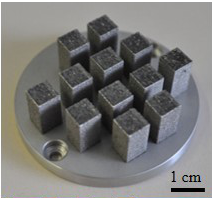
Set of 12 samples for compression testing manufactured from Fe-28Al (at%) powder by SLM.
However, the limited ductility of Fe-Al intermetallic alloys at ambient temperature is an issue which so far has prevented a wider use of Fe-Al-based alloys for a large range of applications. This limited ductility is partly due to the coarse microstructures of the Fe-Al alloys. Novel techniques such as Additive Layer Manufacturing (ALM) by Selective Laser Melting (SLM), Electron Beam Melting (EBM) or Laser Metal Deposition (LMD) allow near net shape production of parts with complex geometries and with fine-grained microstructures and with a homogeneous distribution of its microstructural elements.
Within the large scale collaborative project, Fe-Al-based alloys are developed and optimised for ALM processing and to obtain good mechanical and thermo-mechanical properties. Macroscopic parts are produced by SLM, LMD and EBM techniques, the microstructures are analysed, and resulting mechanical properties are established for a variety of processing conditions.
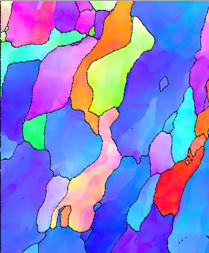
The project is a collaboration with Airbus Group Innovations (Ottobrunn), Siemens AG (Berlin), Fraunhofer-Institut für Lasertechnik (Aachen), Dr. Kochanek Entwicklungs- gesellschaft (Neustadt a. d. Weinstrasse), and NANOVAL GmbH & Co. KG (Berlin) and is funded within the framework program “MatRessource” by the Bundesministerium für Bildung und Forschung (BMBF).
